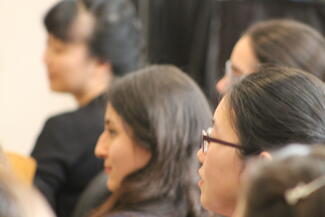
Biodegradable Monolithic Silicon Sensor Platforms
Olav Solgaard, Professor of Electrical Engineering/Director of Ginzton Laboratory
Spilker 232 (Stanford Community Only) and Remote via Zoom at 4:15 p.m. PDT
Refreshments will be served on Spilker Second Floor Terrace around 3:45 p.m.
ABSTRACT: Understanding complex interactions and mitigating negative effects in our environment require fine-masked monitoring of a very large number of environmental gasses and pollutants in our atmosphere and out oceans. In addition to meeting specifications on accuracy, stability, and reproducibility, these sensors must be innocuous in the sense that they should be able to operate in fragile ecosystems without causing damage. In this talk we introduce a silicon sensor technology that is bio-degradable so that they can be left in the environment without the need for costly, and often-ignored, removal after their useful lifetime. Central to the sensor platform is Silicon-on-Nothing (SON) technology that allows nearly arbitrary shapes to be fabricated in monolithic, single-crystalline Silicon. SON leverages the unrivalled investment in Silicon fabrication infrastructure. It is based on standard processing that can be carried out in most modern silicon foundries, and the process has sufficient flexibility to allow almost any desired 3D shape to be created as a single-crystalline structure, leading to superior devices with unique mechanical, optical, and chemical properties that lead to improved repeatability and stability. To be biodegradable, the sensors are purely passive and less than a grain of sand in size. They are placed in biodegradable retroreflectors and interrogated remotely by scanning lasers. In this talk, we cover the basics of SON processing, describe several sensors that have been successfully demonstrated in SON technology, and present preliminary results of remote interrogations of the sensor states. We conclude with a discussion of how SON sensors can be developed into a platform for sensing a wide range of measurands and combining the best features of optical remote sensing and electronic point sensors.
Bio: Olav Solgaard earned his Ph.D. degree from Stanford University in 1992. From 1992 to 1995 he carried out research on optical MEMS as a Postdoctoral Fellow at the University of California, Berkeley, and in 1995, he joined the Electrical Engineering faculty of the University of California, Davis. In 1999 he moved to Stanford University where he is now a Professor of Electrical Engineering and Director of Ginzton Laboratory.
Professor Solgaard’s research interest is design and fabrication of micro- and nano-scale photonic devices, ranging from meta-materials to integrated systems. Current focus areas include analog photonic computing for low power consumption, photonic crystal sensors for environmental monitoring, and chip-scale, laser-driven electron accelerators for attosecond and quantum information science. He has authored more than 400 technical publications and holds 80 patents. Professor Solgaard is a Fellow of the IEEE, the Optical Society of America, the Royal Norwegian Society of Sciences and Letters, and the Norwegian Academy of Technological Sciences.
This seminar is sponsored by the Department of Applied Physics and the Ginzton Laboratory.